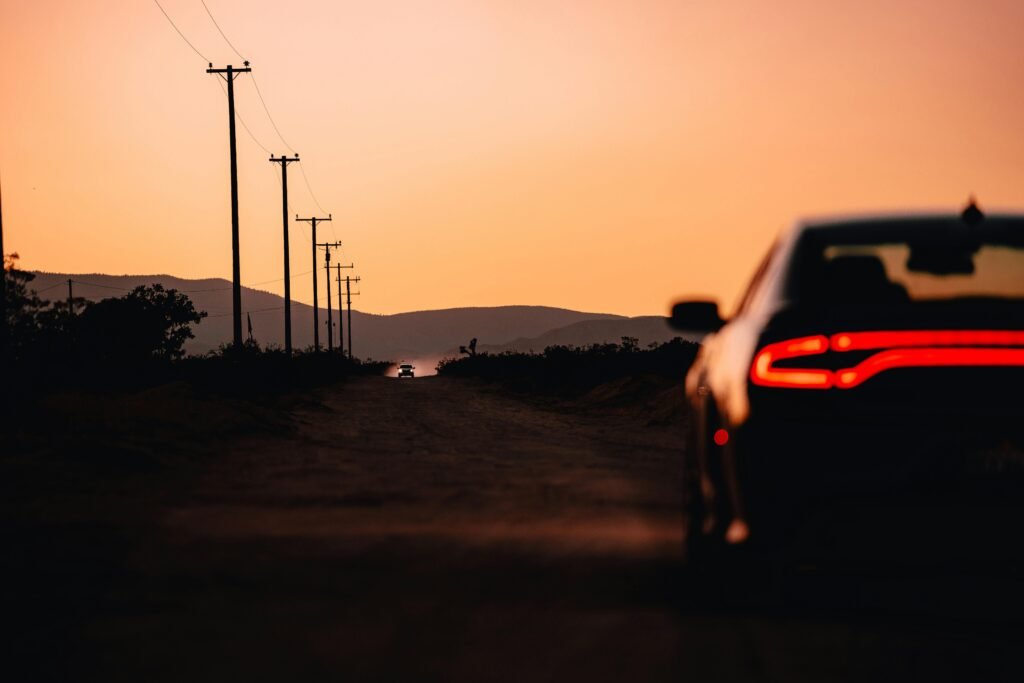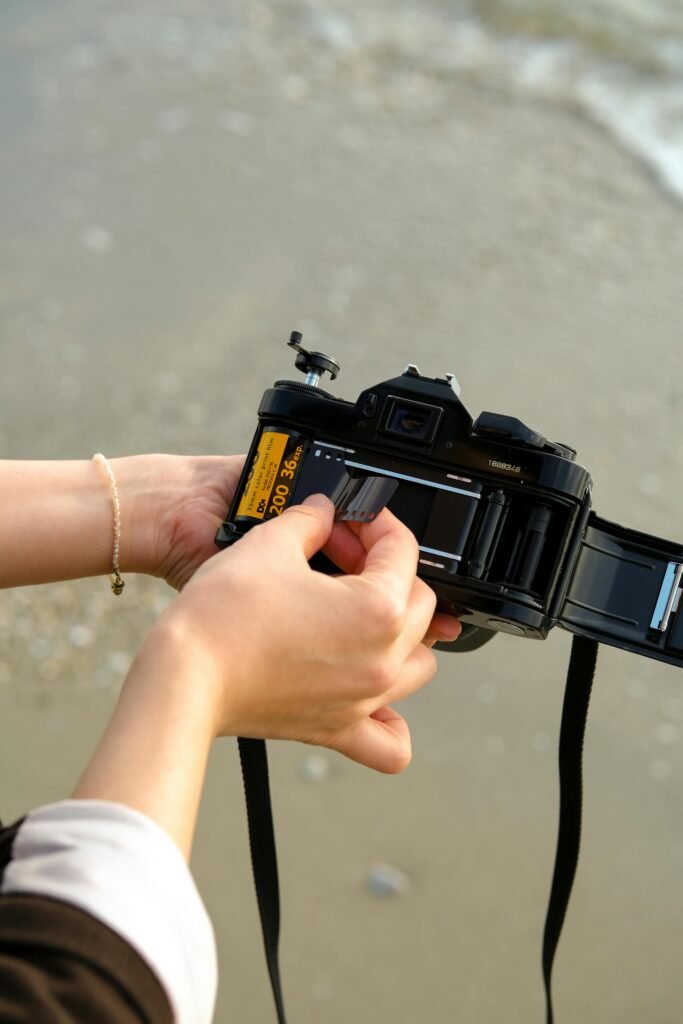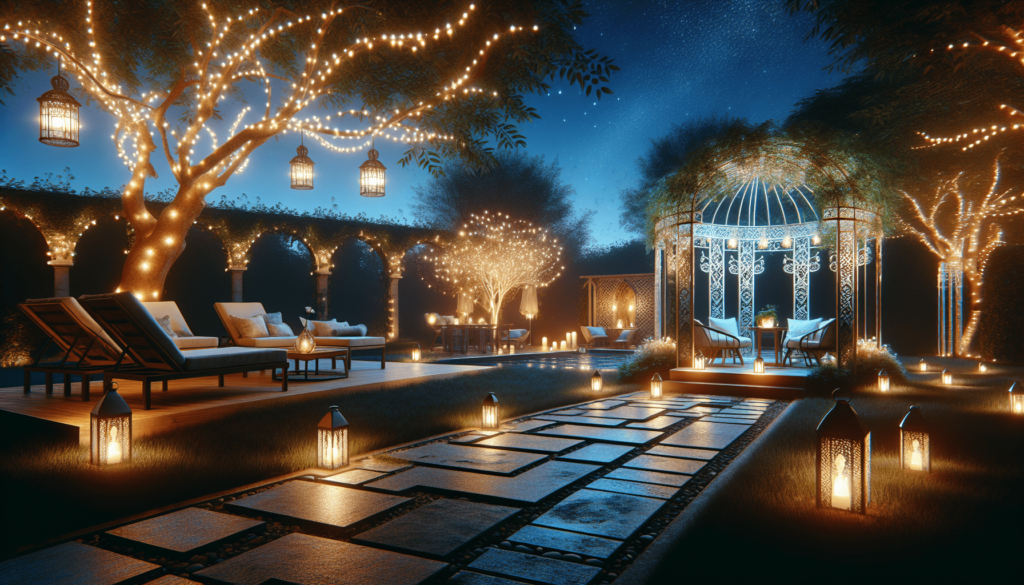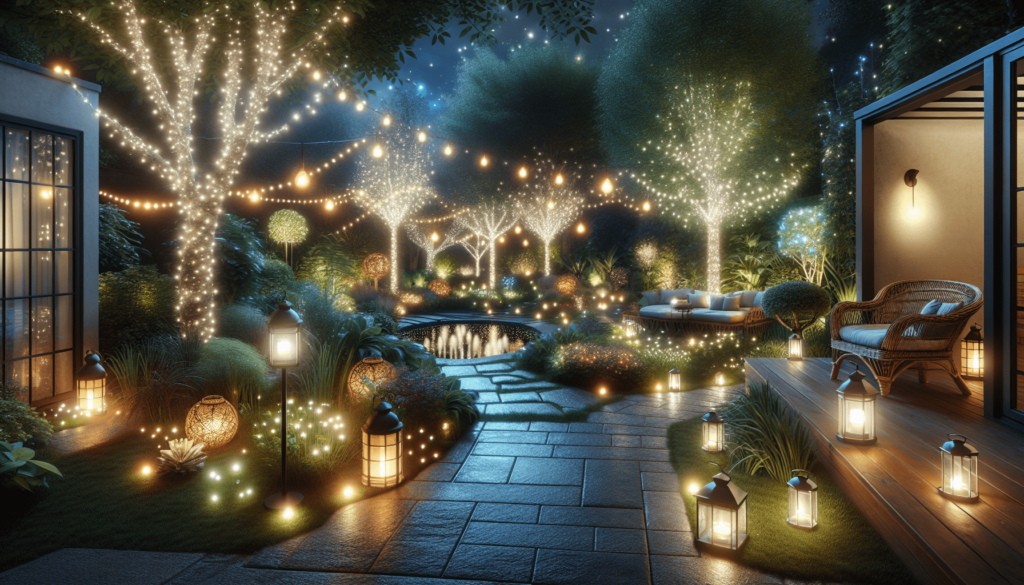Imagine stepping out into your backyard on a warm summer evening, greeted by a breathtaking ambiance that instantly transports you to a magical realm. With the right outdoor lighting design, this enchanting experience can become a reality. Whether you’re looking to create a cozy nook for intimate gatherings or a dazzling display to impress your guests, outdoor lighting design holds the key to transforming your outdoor space into a captivating oasis. From string lights delicately draped across your patio to strategically placed path lights, the possibilities are endless. So why wait? Let your imagination run wild as you embark on a journey to create a truly mesmerizing outdoor atmosphere.

1. Understand the Importance of Outdoor Lighting Design
When it comes to enhancing the overall appeal of your outdoor space, outdoor lighting design plays a pivotal role. It not only adds to the beauty and aesthetics of your surroundings but also creates a safe and functional environment. Additionally, outdoor lighting design has the ability to add a touch of enchantment and magic to your outdoor space, making it truly special.
Enhancing the beauty of your outdoor space
Outdoor lighting design can significantly enhance the beauty of your outdoor space by highlighting its best features and creating a stunning visual impact. Whether you have a beautifully manicured garden, an inviting patio, or an elegant swimming pool, the right outdoor lighting fixtures and techniques can accentuate these elements and bring out their true essence. By strategically placing lights to illuminate key areas, you can create a captivating atmosphere that not only looks stunning but also invites you to spend more time outdoors.
Creating a safe and functional environment
Outdoor lighting design is not just about aesthetics; it is also about creating a safe and functional environment. Well-lit pathways, driveways, and entrances ensure that you and your guests can navigate your outdoor space with ease, even in the darkness. Adequate lighting also deters potential intruders and enhances the security of your property. By choosing the right outdoor lighting fixtures and techniques, you can strike a perfect balance between style and functionality.
Adding a touch of enchantment and magic
One of the most exciting aspects of outdoor lighting design is its ability to add a touch of enchantment and magic to your outdoor space. Whether you want to create a romantic ambience for an intimate gathering or infuse a festive spirit during holidays, outdoor lighting design allows you to transform your space into a captivating wonderland. By using different lighting techniques and incorporating color, you can create a magical atmosphere that will leave your guests in awe.
2. Consider Different Lighting Techniques
To achieve the desired ambiance for your outdoor space, it is important to consider different lighting techniques. Each technique serves a specific purpose and can be used individually or in combination to create a visually striking effect.
Up-lighting
Up-lighting involves placing lighting fixtures at ground level and directing the light upward to highlight specific architectural features, trees, or focal points in your outdoor space. This technique creates a dramatic effect by casting shadows and emphasizing the height and texture of objects. It is commonly used to accentuate the beauty of trees, sculptures, and tall structures.
Down-lighting
Down-lighting, also known as moonlighting, involves placing lighting fixtures above ground level and directing the light downwards. This technique mimics the natural effect of moonlight and creates a soft and subtle illumination. Down-lighting is commonly used to illuminate pathways, outdoor seating areas, and landscape elements like water features and gardens.
Path lighting
As the name suggests, path lighting is used to illuminate pathways and walkways in your outdoor space. This technique provides safety and navigation for you and your guests, especially during the nighttime. Path lighting fixtures are typically low to the ground and cast a warm and inviting glow along the desired path. They come in various designs, ranging from sleek and modern to rustic and traditional, allowing you to choose fixtures that match the style of your outdoor space.
Accent lighting
Accent lighting is used to draw attention to specific features or areas in your outdoor space. It can be used to highlight architectural elements, sculptures, or focal plants and trees. Accent lighting fixtures are typically small and strategically placed to create a focal point. They add depth and visual interest to your outdoor space, making it more inviting and captivating.

3. Select the Right Type of Outdoor Lighting Fixtures
Choosing the right type of outdoor lighting fixtures is crucial to ensure that your lighting design is not only functional but also aesthetically pleasing. There are various types of fixtures available, each tailored for specific purposes and applications.
Wall-mounted fixtures
Wall-mounted fixtures are a versatile option for outdoor lighting. They come in various designs and sizes, making it easy to find fixtures that complement the style of your outdoor space. These fixtures are typically installed on walls, pillars, or posts, providing ample illumination for entrances, pathways, and outdoor seating areas. Wall-mounted fixtures can be used for both up-lighting and down-lighting, depending on the desired effect.
Floodlights
Floodlights are powerful and wide-angled fixtures that emit a broad beam of bright light. They are commonly used for security purposes as they can illuminate large areas, making it difficult for intruders to remain hidden. Floodlights are also utilized for accent lighting, especially when you want to highlight a large architectural feature, such as the façade of your house or a grand entrance.
String lights
String lights, also known as fairy lights, are a popular choice for adding a whimsical and enchanting touch to outdoor spaces. These lights consist of small bulbs attached to a string or wire, creating a magical and warm glow when draped across trees, pergolas, or outdoor structures. String lights are perfect for creating a romantic atmosphere during special occasions or adding a festive spirit to your outdoor space during holidays.
Lanterns
Lanterns add a charming and vintage touch to outdoor lighting design. Whether you opt for traditional lanterns with candles or modern LED-powered lanterns, they are a versatile lighting option for various outdoor spaces. Lanterns can be placed on tables, hung from trees, or mounted on walls to create a cozy and intimate ambiance. They are particularly well-suited for outdoor dining areas or cozy seating nooks.
4. Determine the Ideal Placement of Outdoor Lighting
The placement of outdoor lighting is key to achieving a well-balanced and visually pleasing design. By strategically placing lighting fixtures, you can highlight architectural features, accentuate landscape elements, and illuminate pathways and walkways effectively.
Highlighting architectural features
Outdoor lighting can work wonders in highlighting the architectural features of your house or other structures in your outdoor space. By placing fixtures at key points, such as the façade, columns, or unique design elements, you can draw attention to these features and create a visually stunning effect. Additionally, well-placed lighting can add depth and dimension to the overall appearance of your outdoor space, making it more aesthetically pleasing.
Accentuating landscape elements
Incorporating outdoor lighting fixtures to accentuate landscape elements can significantly enhance the overall appeal of your outdoor space. By strategically placing lights near trees, shrubs, flower beds, or other plants, you can create a visually captivating environment that showcases the beauty of nature. This technique allows you to highlight specific plants or create a cohesive lighting design that complements the natural elements in your outdoor space.
Illuminating pathways and walkways
Proper illumination of pathways and walkways is essential for safety and functionality in your outdoor space. By installing path lights or using other lighting techniques along the desired paths, you can ensure that you and your guests can navigate your outdoor space with ease, even during the nighttime. Illuminated paths not only provide a sense of security but also add a beautiful and welcoming touch to your outdoor landscape.

5. Create a Focal Point with Outdoor Lighting
A focal point adds a wow factor to your outdoor space and draws attention to a specific area or feature. By cleverly using outdoor lighting, you can create a focal point that becomes the centerpiece of your outdoor design.
Emphasizing a water feature
If you have a water feature in your outdoor space, such as a pond, fountain, or waterfall, you can use outdoor lighting to emphasize its beauty and make it a stunning focal point. By strategically placing lights around the water feature, you can create reflections and shadows that enhance its visual appeal. This technique not only adds a touch of enchantment but also creates a serene atmosphere, perfect for relaxation and enjoyment.
Enhancing a sculpture
If you have a sculpture as part of your outdoor decor, using outdoor lighting to enhance its visual impact can create a captivating focal point. By positioning lights to shine on the sculpture from different angles, you can create a play of light and shadow that brings the sculpture to life. This technique allows you to appreciate the intricate details and craftsmanship of the sculpture while adding a sense of artistic elegance to your outdoor space.
Highlighting a focal plant or tree
A focal plant or tree can become a striking centerpiece in your outdoor space when illuminated with outdoor lighting. By directing light towards the plant or tree, you can create a mesmerizing effect that showcases its unique beauty. This technique is particularly effective for large, majestic trees or vibrant flowering plants that deserve special attention. When properly lit, a focal plant or tree can become a conversation starter and leave a lasting impression on your guests.
6. Use Different Levels of Light
Creating visual interest and ambiance in your outdoor space can be achieved by using different levels of light. Layering light by combining various lighting techniques and fixtures adds depth, texture, and dimension to your outdoor design.
Layering light for added depth and texture
Layering light involves using multiple lighting fixtures at different heights and angles to create depth and texture. By combining up-lighting and down-lighting techniques, you can highlight different elements and surfaces in your outdoor space. For example, you can use up-lights to graze the textured walls of your house and down-lights to softly illuminate the seating area underneath a pergola. This layering effect adds visual interest and creates a dynamic and inviting atmosphere.
Creating visual interest and ambiance
Outdoor lighting design is not only about functionality but also about creating a captivating ambiance. By using different levels of light, you can set the mood and ambiance that suits your desired atmosphere. Bright and well-lit areas are perfect for hosting gatherings and outdoor activities, while softer and more dimly lit areas can create a cozy and romantic setting for intimate evenings. By carefully selecting the intensity and placement of your outdoor lighting fixtures, you can transform your outdoor space into a captivating sanctuary that reflects your personal style.
Balancing brightness and darkness
Another important aspect of using different levels of light is finding the right balance between brightness and darkness. While it is essential to provide ample illumination for safety and functionality, incorporating areas of darkness in your outdoor space can add a touch of mystery and allure. By leaving certain areas partially illuminated or in shadow, you create contrasting pockets of light and darkness that make your outdoor space visually intriguing. This interplay of light and darkness adds depth and drama to your overall outdoor lighting design.

7. Incorporate Color into Your Outdoor Lighting Design
Adding color to your outdoor lighting design can elevate its impact and create a more vibrant and dynamic atmosphere. Depending on your preference and the specific mood you want to evoke, there are several ways to incorporate color into your outdoor lighting.
Using colored LED lights
LED lights come in a variety of colors and can be used to create a colorful and enchanting outdoor lighting display. Whether you want to bathe your outdoor space in a calming blue hue or create a festive atmosphere with vibrant multicolored lights, colored LED lights offer endless possibilities. You can use them to highlight specific features, create a themed lighting design, or simply infuse your outdoor space with a pop of color.
Highlighting specific areas with colored gels
Colored gels are transparent filters that can be placed in front of outdoor lighting fixtures to create different hues and shades. By selecting colored gels that complement your outdoor space or evoke a specific mood, you can highlight specific areas and add visual interest. For example, you can use warm tones like orange or amber to create a cozy and inviting atmosphere, or bold colors like red or purple to make a bold statement.
Creating a festive or romantic atmosphere
Colorful lighting can be a great way to set the tone for special occasions or celebrations in your outdoor space. By using different colors and lighting techniques, you can create a festive atmosphere for holidays or parties. For example, you can choose red and green lights for Christmas, or soft pink and white lights for a romantic dinner under the stars. Colorful lighting allows you to infuse your outdoor space with a sense of excitement and joy, making any gathering or occasion truly memorable.
8. Embrace Energy-Efficient Outdoor Lighting Solutions
In today’s world, energy efficiency is an important consideration in every aspect of our lives, including outdoor lighting design. By embracing energy-efficient outdoor lighting solutions, you not only contribute to a more sustainable future but also reap the benefits of cost savings and easy maintenance.
Opting for LED lights
LED lights are the most energy-efficient lighting option available for outdoor spaces. They consume significantly less energy compared to traditional lighting technologies, such as incandescent or fluorescent lights, while still providing ample illumination. LED lights also have a longer lifespan, reducing the frequency of bulb replacement and saving you money in the long run. With a wide range of styles and colors available, LED lights offer endless possibilities for creating a stunning outdoor lighting design.
Installing motion sensor lights
Motion sensor lights are not only energy-efficient but also enhance the security of your outdoor space. These lights are designed to turn on automatically when they detect motion, providing immediate illumination in areas where increased visibility is needed. By installing motion sensor lights along pathways, entrances, or near potential intrusion points, you can deter unwanted visitors and effectively light up your outdoor space only when necessary.
Using solar-powered lights
Solar-powered lights are an excellent choice for outdoor lighting in areas where access to electricity may be limited. These lights use solar panels to convert sunlight into electricity, which is then stored in rechargeable batteries. Solar-powered lights are not only energy-efficient but also environmentally friendly, as they do not require electricity from the grid. They are easy to install and require minimal maintenance, making them a convenient and sustainable option for illuminating your outdoor space.

9. Consider Automation and Control Systems
Automation and control systems can add convenience, flexibility, and customization to your outdoor lighting design. By integrating these systems, you can effectively manage and control your outdoor lighting, making adjustments as needed to suit your preferences and the specific occasion.
Installing timers and dimmers
Timers and dimmers are practical additions to your outdoor lighting design, allowing you to customize the timing and brightness of your lights. By setting timers, you can ensure that your outdoor lighting turns on and off automatically, even when you are not at home. This not only enhances security but also provides a hassle-free solution for maintaining a consistent lighting schedule. Dimmers, on the other hand, allow you to adjust the brightness of your outdoor lights according to your needs and preferences, creating the desired ambiance for any occasion.
Using smart technology for remote control
With the advent of smart technology, controlling your outdoor lighting has become easier than ever. Smart home systems and mobile apps allow you to remotely control and manage your outdoor lights with a touch of a button. Whether you want to turn on specific lights, change colors, or adjust brightness levels, you can do it all from the convenience of your smartphone or tablet. This level of automation and control gives you the freedom to personalize and fine-tune your outdoor lighting design according to your mood and preferences.
Creating preset lighting scenes
Preset lighting scenes are a fantastic way to create a variety of lighting moods and atmospheres in your outdoor space. By programming your automation system with different lighting settings, you can effortlessly switch between preconfigured scenes with just a few taps. For example, you can have a scene for romantic evenings, a scene for entertaining guests, and a scene for late-night relaxation. Preset lighting scenes offer a convenient and efficient way to create the perfect ambiance for any occasion, ensuring that your outdoor lighting design always meets your desired expectations.
10. Maintenance and Safety Tips for Outdoor Lighting
Maintaining your outdoor lighting is crucial to ensure its longevity, safety, and optimal performance. By following some simple maintenance and safety tips, you can keep your outdoor lighting in top condition and enjoy its benefits for years to come.
Regularly cleaning and inspecting fixtures
Outdoor lighting fixtures are exposed to the elements, which can cause dirt, debris, and other contaminants to accumulate over time. It is important to regularly clean your fixtures to maintain their appearance and functionality. Use a mild detergent and a soft cloth to gently clean the fixtures, ensuring that you do not damage any electrical components. Additionally, inspect the fixtures for any signs of damage, loose connections, or corrosion. Promptly address any issues to prevent further damage and ensure the safety of your outdoor lighting system.
Replacing burnt-out bulbs promptly
Burnt-out bulbs not only diminish the effectiveness of your outdoor lighting but also detract from its overall aesthetic appeal. Regularly check your outdoor lighting system and promptly replace any burnt-out bulbs. Ensure that you use the correct type and wattage of bulbs recommended for your fixtures to avoid any potential risks or damages. It is also a good idea to keep spare bulbs on hand for quick and easy replacements.
Protecting wiring and electrical connections
Properly protecting the wiring and electrical connections of your outdoor lighting system is crucial for safety and performance. Ensure that all wiring is securely installed and protected from exposure to harsh weather conditions. Use waterproof junction boxes or covers to shield electrical connections and prevent moisture intrusion. Additionally, burying or concealing wires underground can help minimize the risk of accidental damage and tripping hazards. It is advisable to consult a professional electrician for proper installation and to ensure compliance with local electrical codes.
In conclusion, outdoor lighting design is an essential element in creating a truly remarkable outdoor space. By understanding its importance, considering different lighting techniques, selecting the right fixtures, determining ideal placement, creating focal points, using different levels of light, incorporating color, embracing energy efficiency, considering automation and control systems, and following maintenance and safety tips, you can create a magical ambiance that will truly transform your outdoor space into a captivating sanctuary. So go ahead, unleash your creativity, and let outdoor lighting design work its magic!



